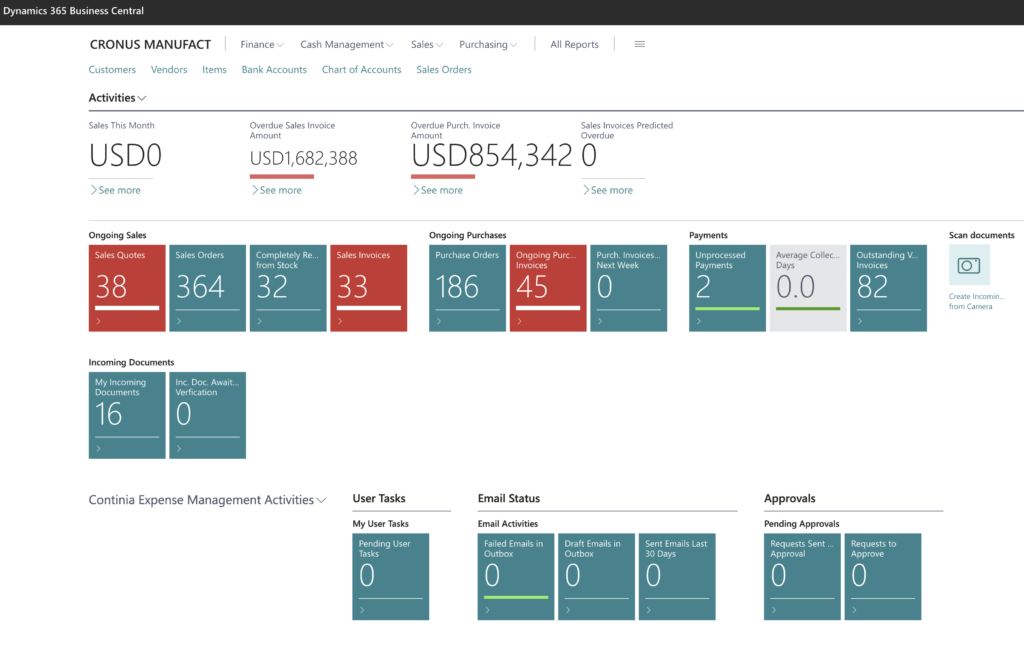While the cost of implementing an ERP can intimidate organizations to take the step forward, the cost of NOT implementing an ERP is what they really should worry about.
Enterprise resource planning (ERP) software has been around for a long time. The term “ERP” was formally coined in the 90s but used even around the 70s in mainframe-driven accounting systems. These early systems laid the groundwork for today’s comprehensive ERP solutions. Today, it’s a part of a company’s digital transformation to make processes more efficient. Organizations depend on ERP systems to connect supply chain management processes with financial and accounting workflows, CRM systems, human resources and more.
The costs associated with maintaining legacy systems or relying on outdated business processes can often far exceed those of a new ERP system implementation. In this article, we’ll delve into the various ways organizations can incur unnecessary expenses by delaying ERP implementation.
Wasted time
Consider how much time you could save by keeping everything in one place. A system that could record, track, analyze and report. Instead of dealing with errors and workarounds from outdated processes, which could be time assuming, you could instead be working on projects that generate revenue.
Forrester’s Total Economic Impact study for Microsoft Dynamics 365 found that companies who implemented D365 improved operations efficiency by $39 million and avoided $10.6 million in legacy costs. Organizations avoided legacy license, maintenance, hardware, and systems administration costs by adopting Microsoft Dynamics 365 for Finance and Operations. This transition not only streamlines operations but also frees up resources to focus on strategic initiatives that drive business growth.
Cost of applications and extensions
The cost of applications and extensions can quickly escalate for organizations seeking to meet specific software functionality needs. Each individual component contributes to the overall expense, potentially surpassing the cost of an integrated solution like an ERP. Moreover, managing multiple disparate software solutions can be overwhelming, demanding additional resources for maintenance and administration. This fragmented approach not only increases financial outlay but also operational complexity, highlighting the benefits of consolidating systems under a unified ERP platform. By doing so, organizations streamline costs, enhance efficiency, and reduce the burden on IT and administrative resources.
Security risks
Any business can fall victim to a cyberattack, but some setups are more vulnerable than others. How much time, effort and money does it take to maintain your current infrastructure, custom code and integrations? It involves significant expenditures of time, effort, and money to ensure that all systems are secure, updated, and compliant with evolving cybersecurity standards. Regular audits, patches, and updates are necessary to fortify defenses against potential breaches and ensure data integrity and customer trust. Moreover, managing custom code and integrations demands continuous monitoring and troubleshooting, which can strain IT resources and operational efficiency. These proactive measures are crucial investments in safeguarding against cyber threats and minimizing the potential impact of security incidents on your business operations and reputation.
Data entry errors
Not only can data entry errors lead to financial losses, but the effort required to manually correct these mistakes can also be both costly and time-consuming. Each error necessitates painstaking review and correction, diverting valuable resources away from more productive tasks. Inaccurate data can undermine decision-making processes, leading to further operational inefficiencies and potential setbacks. Implementing automated data validation and error detection mechanisms can significantly mitigate these risks, ensuring data accuracy while optimizing resource allocation for more strategic initiatives. This proactive approach not only enhances operational efficiency but also strengthens overall data integrity and business resilience.
More resources
The need for additional employees and employee hours increases proportionally as tasks become more tedious and time-assuming. This requirement arises from the necessity to handle manual and repetitive processes that demand extensive human intervention. As workloads grow, so does the demand for skilled personnel capable of managing these tasks effectively. Furthermore, allocating more resources to handle such burdensome tasks can strain budgets and operational efficiency, potentially impacting overall productivity and employee satisfaction. Implementing automation solutions and streamlining workflows can alleviate these pressures, allowing organizations to optimize resource utilization and focus human capital on value-added activities that drive growth and innovation.
Enhancing ROI with ERP Implementation
The actual cost of not implementing ERP can be calculated by understanding the potential benefits offered by a modern ERP system versus the cost of maintaining a legacy system. Modern ERP systems streamline operations, enhance data accuracy, and improve decision-making capabilities through real-time insights. In contrast, legacy systems often require extensive maintenance, lack integration capabilities, and hinder scalability. By quantifying the efficiency gains, cost savings, and revenue opportunities enabled by ERP adoption, businesses can assess the true opportunity cost of sticking with outdated infrastructure. This analysis underscores the strategic value of investing in a robust ERP solution to drive sustainable growth and competitive advantage.
Cost of NOT implementing ERP = ROI – TCO
Return on Investment (ROI)
ROI is a standard measure to evaluate the efficiency of an investment.
ROI = (Value of current ERP – cost of investment) / New ERP cost
Total Cost of Ownership (TCO)
TCO is used to calculate informed financial decisions. Instead of just looking at the purchase price, TCO looks at the complete cost from purchase to implementation, including expected costs during the lifetime of the product, such as service, maintenance, and more.
Possible extra costs to take into account when calculating costs:
- Cost of software
- Cost of infrastructure
- Opportunity costs
- Cost of compliance
- Cost of labor
Read more: How much does an ERP system cost?
Why choose Microsoft Dynamics 365 over other modern ERP systems?
Other than its competitive price, ease of operations and higher ROI, Microsoft Dynamics 365 offers scalability. As your business grows and as your daily operations demand additional applications, your business can opt for additional features in the future.
Dynamics 365 is always changing and improving. With its cloud based software it no longer requires you to wait for new versions or features. Updates are seamlessly integrated, ensuring your system remains current with the latest innovations and security enhancements without disruption to your operations. This agility allows your business to adapt quickly to market changes and evolving customer needs, maintaining a competitive edge.
Moreover, Microsoft’s extensive ecosystem and integration capabilities enhance Dynamics 365’s appeal. It integrates smoothly with other Microsoft products such as Office 365, Power Platform, and Azure, facilitating a cohesive digital environment. This interoperability not only simplifies data management and collaboration but also extends functionality through a wide range of third-party applications and industry-specific solutions.
Microsoft’s commitment to compliance and data security provides peace of mind. Dynamics 365 adheres to stringent global standards and regulations, safeguarding your sensitive business data and ensuring regulatory compliance across various industries.
Choosing Microsoft Dynamics 365 ensures not only a robust ERP solution with scalability and continuous innovation but also a comprehensive ecosystem that supports your business growth and digital transformation journey.

Conclusion
Before any company decides that an ERP is too expensive or too complex for their needs, they should consider how not having an ERP will impact their growth potential. The bottom line is that mistakes cost money so it’s crucial to avoid errors by implanting ERP.
By forgoing an ERP, organizations overlook opportunities to streamline operations, expedite processes, enhance productivity, and achieve more with fewer resources. ERP systems centralize data, automate tasks, and provide real-time insights that enable informed decision-making and operational agility. This not only improves efficiency but also empowers businesses to capitalize on market opportunities and stay ahead of competitors.
In essence, investing in an ERP is an investment in future-proofing your business against inefficiencies and missed opportunities. It’s about laying a foundation for sustainable growth, operational excellence, and profitability in an increasingly competitive landscape.
Why Choose Calsoft Systems ERP Implementation Services
Calsoft Systems excels in guiding organizations through seamless ERP implementations, ensuring tailored solutions that align with specific business needs and goals.
With extensive experience as a Microsoft Gold Partner and expertise across Dynamics 365, GP, NAV, and AX, Calsoft brings deep knowledge to every ERP implementation project. Whether migrating from legacy systems or deploying a new ERP solution, Calsoft’s certified ERP implementation consultants offer strategic guidance and technical proficiency for a successful ERP implementation.
Want to learn more about Microsoft Dynamics 365? Contact one of our ERP implementation consultants to get a better understanding of how an ERP can help your company with a digital transformation.
More to read about ERP:
- How to Select an ERP Vendor?
- 3 Factors That Will Impact Your ERP Selection
- ERP Security Framework – Protect Your Sensitive Data
- Industries That Benefit Most from ERP
- Dynamics 365 Benefits – Advantages of Having ERP from Microsoft
- This is Why Your Company Need an ERP Solution Today

